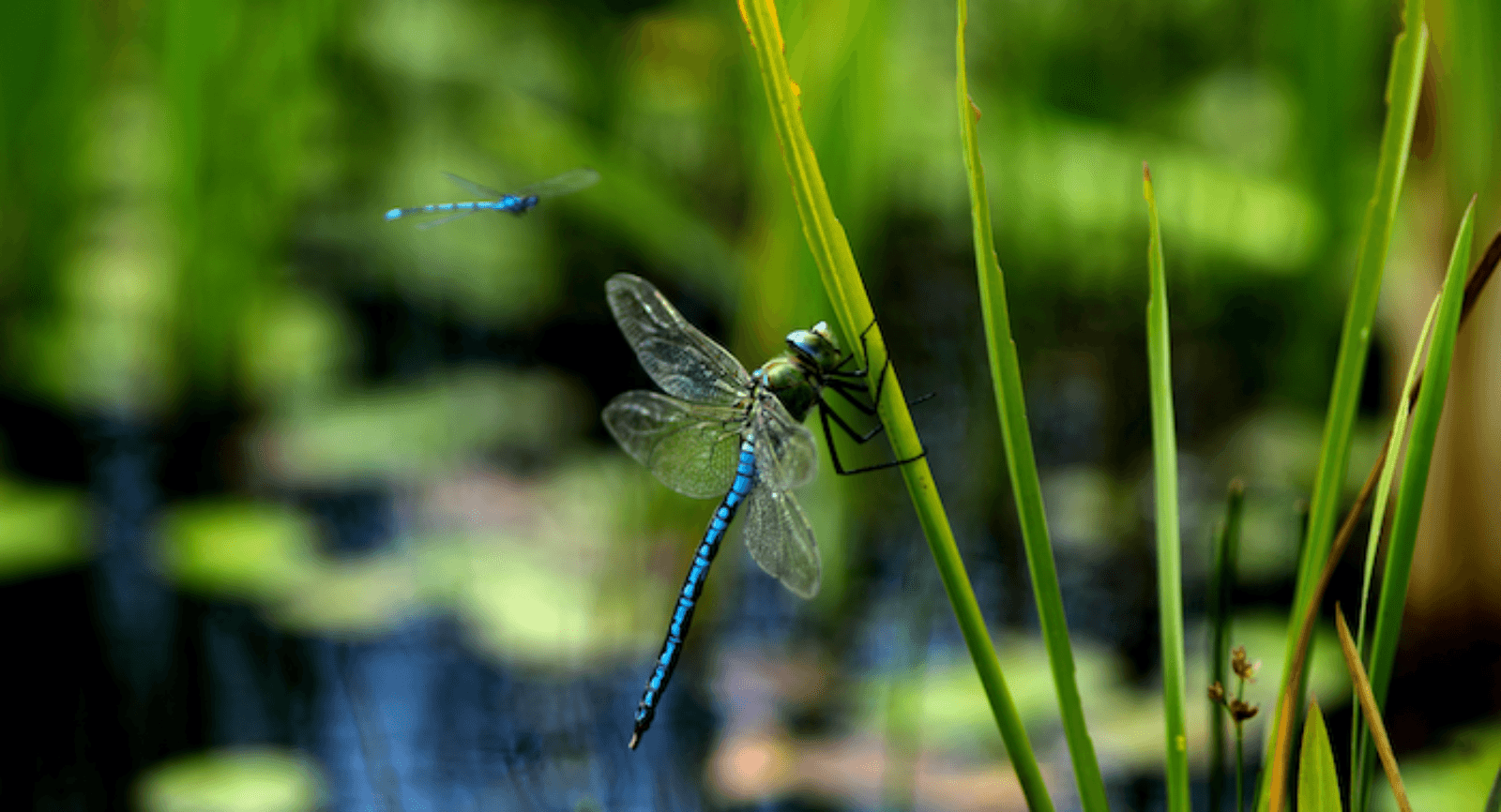Lessons from Dragonflies
by Alan S. Brown
Caltech’s Morteza Gharib applies his mastery of flow to creating a better artificial heart valve

The Author
The Researcher
Everyone has seen iridescent dragonflies flit through the air. Yet dragonflies spend two-thirds of their lives underwater as larvae. There, they move about by shooting jets of water through a three-flap valve that controls their direction.
Studying that valve sounds like an obscure academic exercise. But when post-doctoral researcher Chris Roh showed it to Morteza Gharib, his advisor, Gharib encouraged him to study it closely.
“I told him, ‘This could be a big one,’” Gharib said. Indeed it was. Understanding the valve’s workings enabled Roh and Gharib to develop a revolutionary—and inexpensive—heart valve.
It was the type of insight Gharib, a member of the Kavli Institute of Nanoscience and a former provost of research at California Institute of Technology, has demonstrated throughout his professional career.
Gharib’s work shows many startling jumps of imagination. His work on measuring bubbles, for example, led to new ways to make dental crowns. His work on nanotubes led to new ways to reduce ship fuel, improve batteries, and give painless injections. A shunt developed to relieve brain swelling turned into a device to treat glaucoma.
One thing unites all these inventions: flow.
“If you look at all the things I worked on, they involve flow or devices to observe flow, whether it’s air, water, blood vessels, or circulation in the human eye or over nanostructures,” Gharib said.
Yet, while many other researchers dive deeply into flow, Gharib has a knack for applying what he has learned in often surprising ways.
The Heart
Gharib began investigating heart valves 20 years ago, when a cardiologist friend challenged him to develop a better artificial replacement.
Natural heart valves have three flaps that direct the flow of blood from the aorta, a large artery, into the heart. When the heart contracts, the valves close to keep blood from rushing back down the aorta.
There are two types of artificial heart valves. Mechanical valves last up to 20 years but require patients to take a lifetime of blood thinners to prevent possible blood clots. Animal-based valves, made from cow or pig tissue, get around those problems but are less durable, and their construction—requiring as many as 1,000 sutures—make them a costly option.
Both options, though, can be cost-prohibitive, Gharib said: “In most developing countries, people have no access to artificial heart valves. Even here, you never get a heart valve replaced unless you have good insurance.”
To understand how nature built heart valves from just 300 cells, he studied zebrafish embryos.
“The embryonic heart of a zebrafish fits in a human hair,” Gharib said. “It was unbelievable to me to see it flapping. I wanted to learn from nature—starting at the nanoscale—how to design a valve and not to just mimic what nature does.”
Gharib also knew that Nature reuses good design solutions, so he asked his students to study other valves. When Roh showed him the dragonfly larvae, Gharib knew he had found a system that might teach them how to make a better heart valve.
Like the human heart, dragonfly larvae valves have three leaves of connected tissue that open to emit water jets and close by folding over one another. A muscle in each leaflet lets the larvae direct its water jet in different directions.
The ability to direct flow fascinated Gharib. He emulated the behavior of those muscles by controlling the thickness of the flaps, so that they offered different amounts of resistance to the flow of blood. This way, when blood moved through them, they deformed in a way that gently curved the flowing liquid into the heart. This reduced the likelihood of clotting and muscle damage caused by artificial valves that directed a constant flow of blood to just one area of the heart.
Gharib created a company, Foldax, to commercialize the valve. Foldax, in turn, worked with Nobel Prize-winning chemist Robert Grubbs to develop a biocompatible polymer that withstands the hundreds of millions of open-and-close cycles a heart undergoes during decades of life. A test valve has undergone 600 million cycles without any signs of wear.
Meanwhile, Foldax has worked with several hospitals to implant the valve in 12 patients. It is awaiting FDA approval for a study that will involve 2,000 patients.
Foldax is building a factory that will enable it to make custom heart valves robotically for less than $60 each.
“Eventually, you will send an MRI of your aorta and we make a valve in four hours versus two weeks for valves today,” Gharib said. “For most adults, we can insert it using minimally invasive surgery without having to remove the natural valve, though older people with fragile blood vessels will require surgery.”
From bubbles to batteries to heart valves, Gharib credits his ability to see unusual applications to his ability to reach out to people with very different backgrounds, such as artists, scientists in other fields, doctors, and philosophers.
“It helps to have those conversations, because they’re looking at problems from a completely different angle,” he said. “I wish I could educate more students that could think like that. Sometimes, I worry that we’re training technicians at the Ph.D. level and not teaching students to be curious and not be afraid if they fail.”